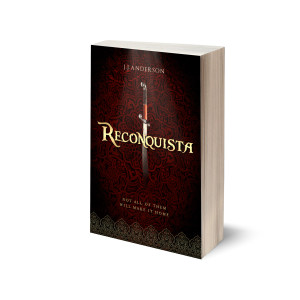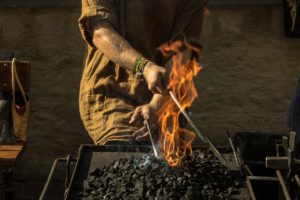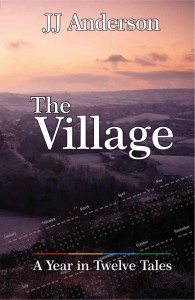 When I was writing ‘Reconquista‘ I had a discussion with my editor and talked with a number of other writers about the time taken to develop its main characters . I did quite a lot of work on establishing their personalities in my own mind, even if some traits and foibles appeared only peripherally in the resulting book. So, for example, I could tell you what Nathan thinks about girls; why Rebecca likes preparing certain foods and that Atta likes particular kinds of music.
When I was writing ‘Reconquista‘ I had a discussion with my editor and talked with a number of other writers about the time taken to develop its main characters . I did quite a lot of work on establishing their personalities in my own mind, even if some traits and foibles appeared only peripherally in the resulting book. So, for example, I could tell you what Nathan thinks about girls; why Rebecca likes preparing certain foods and that Atta likes particular kinds of music.
This was not a waste of my time. This depth would, my editor assured me, pay dividends. And anyway, as another writer, Bobbie Derbyshire, said recently, one’s characters have to earn their place in the novel, by being fully rounded.
Now that I am writing the sequel, I understand. I know, instinctively, how my characters will react in new circumstances. I can also develop them further by building on what I already know about them. They belong and have earned their place.
 All of the characters who set out on journeys in the first book now face a very different set of circumstances when they return home. They have all, to an extent, grown up. The most obvious example is Miguel, who is now ready to take on the mantle of the head of his household and family ( though he still has anti-authoritarian tendencies ). To an extent, he has been preparing for this his whole life, though trying to avoid the responsibility.
All of the characters who set out on journeys in the first book now face a very different set of circumstances when they return home. They have all, to an extent, grown up. The most obvious example is Miguel, who is now ready to take on the mantle of the head of his household and family ( though he still has anti-authoritarian tendencies ). To an extent, he has been preparing for this his whole life, though trying to avoid the responsibility.
Atta too has matured, he has lost his innocence and become much more sceptical about the world and the people around him. He used to idolise his uncle ( and still, to an extent, idolises his father ) but that absolute faith has been punctured by reality. Uncle Taf isn’t a terrible person, he’s just not the perfect  being Atta thought he was. The Atta we meet in the sequel is a much more pragmatic soul and much more independent minded than the Atta who we first saw on the battlements of Jerez during the siege.
being Atta thought he was. The Atta we meet in the sequel is a much more pragmatic soul and much more independent minded than the Atta who we first saw on the battlements of Jerez during the siege.
Rebecca has grown from being a clever but somewhat foolhardy girl into a strong and strong-minded young woman. Her experiences have made her self-reliant, like Atta, and toughened her up. She is now much more likely to question things and take her own decisions, to try to determine her own future.
Ben has, perhaps, had the most traumatic growing to do. He has become both self-aware and aware of how others see him ( to his detriment ). The pomposity is still there, in part, but he is much less judgemental of others, having learned a few lessons about his own behaviour. He is also in a different position relative to his family then before.
 All of them are still feeling their way, but the individual who is searching most obviously for self-definition is Nathan, the youth who knew only what he didn’t want, now begins to realise that he has to decide what he does want and that he can do that best by himself. The sequel is, to an extent, his attempt to define himself and make decisions which will determine his path for much of his life. It is also about the change in the Calamiel family relationships.
All of them are still feeling their way, but the individual who is searching most obviously for self-definition is Nathan, the youth who knew only what he didn’t want, now begins to realise that he has to decide what he does want and that he can do that best by himself. The sequel is, to an extent, his attempt to define himself and make decisions which will determine his path for much of his life. It is also about the change in the Calamiel family relationships.
But isn’t this what novelists do with characters all the time, I hear you ask?
Well, yes, it is. All well-rounded characters develop during a novel, otherwise they wouldn’t be realistic.  It’s only in the most formulaic of stories that characters are fixed. Though I confess I did not know all of the characters in ‘The Village‘ to the extent that I know the characters in ‘Reconquista‘ and its sequel.
It’s only in the most formulaic of stories that characters are fixed. Though I confess I did not know all of the characters in ‘The Village‘ to the extent that I know the characters in ‘Reconquista‘ and its sequel.
In part this is because there were a lot more characters in my short story collection; in part because I was trying after a different effect – to create the sense of a community; and in part because the short form, even of inter-linked stories, didn’t give me a lot of room. I can see that, once the current book is finished and I begin ‘Return to the Village‘ I will have to spend time on that set of characters.
If you enjoyed reading this post you might also enjoy reading Plotting Once more with feeling The High Sierras Tormentas How not to write How not to write again


 RSS – Posts
RSS – Posts